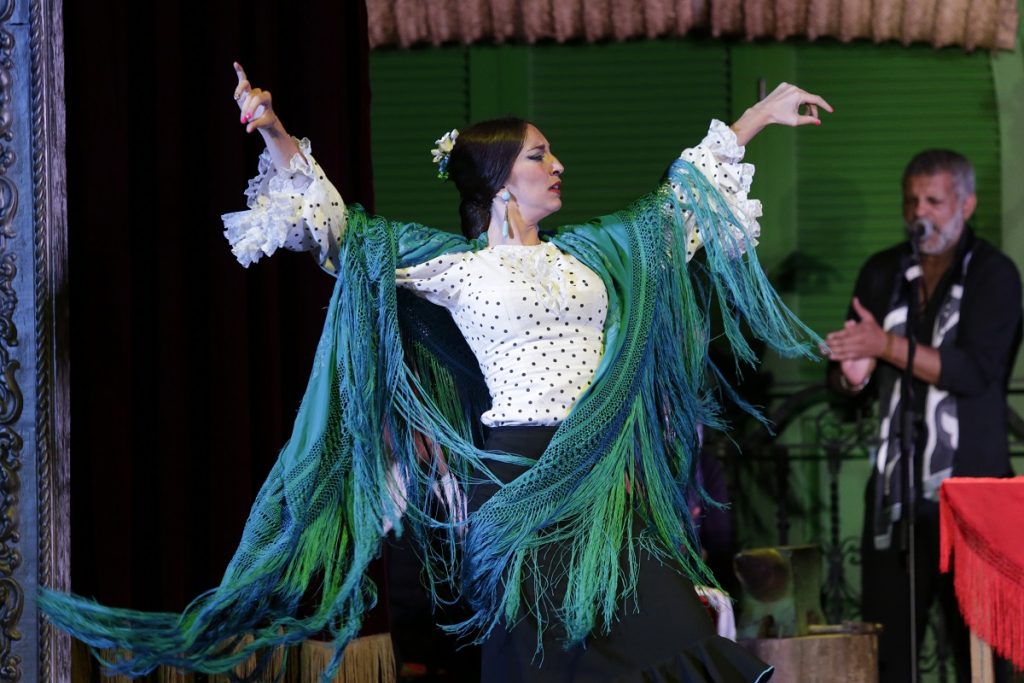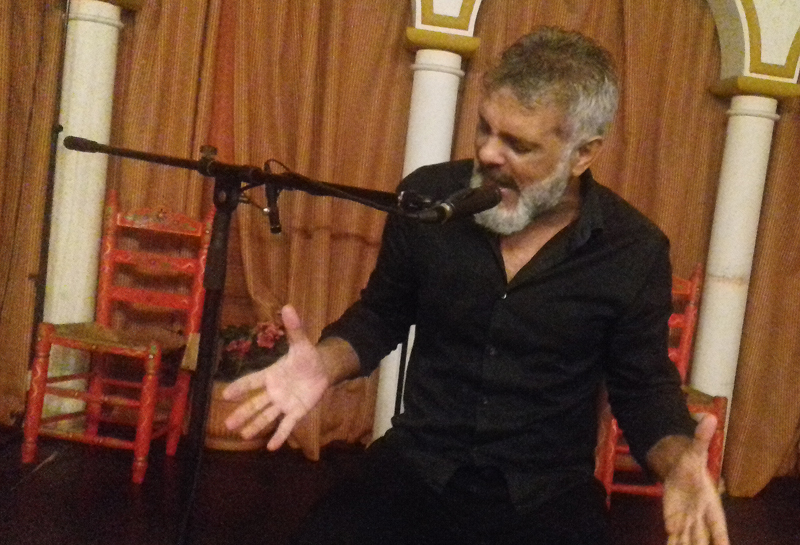
Flamenco is an art of emotions. The feelings are latent in each flamenco style, something that is reflected in the way artists have to interpret it and connect with the public. In a performance, both in singing and in dancing, the interpreters aim to awaken emotions, transmit through lyrics, music, dance and expression.
And it is at this last point, in the expression, that we are going to stop. It is that nonverbal language that artists use to reinforce their message, through movement of the body or gesturing with the face. With these expressions, they also communicate joy, sadness or restlessness, that is, the sentimental load of the flamenco style in question
 Passion, sadness, fury, joy … flamenco is pure transmission of emotions. Think, for example, of a flamenco singer, have you noticed everything that communicates with body language? The gestures of the face, the movement of his hands, his gaze … Everything adds and transmits.
Passion, sadness, fury, joy … flamenco is pure transmission of emotions. Think, for example, of a flamenco singer, have you noticed everything that communicates with body language? The gestures of the face, the movement of his hands, his gaze … Everything adds and transmits.
In all types of art, facial expression is important, but in flamenco it is more important. In most dances, the dancers also speaks with their faces: frowning, smiling, showing seriousness, anger …
It is the way artists have to reinforce the message, to feel and transmit so that the public also feels during their performance.
When a person goes on stage he transforms. In the case of flamenco dancing, the concentration also makes the expression of the artist’s face change. The music, the singing, the lyrics … These are also elements that influence the interpretation with the aim of creating the right environment to awaken those emotions in the public, so that they understand grief, euphoria, joy, passion ….
Let’s say that the dancers transmit dancing what the flamenco style says, with the intention of generating emotions in the public. Flamenco is not a dance anymore. It has a very important emotional charge that is born from its tradition, from the origin of each style.
For example, the soleá is a solemn style. Given its characteristics, interpretation of flamenco dancers adapts very well, because it invites hip wizards, waist cracks and movements of the most characteristic arms of women. In its interpretation, the gesture is more serious than when dancing for joys, a festive style par excellence, light, cheerful and sensual, which includes a movement, an arrogant gesture of the dancer or dancer before the audience to finish the performance.
To interpret a dance or a song well, is not simply to reproduce mechanically with a letter, or to make a series of gestures or movements. It’s about expressing what each style says. For this, the artist must know in detail what he interprets, soak up his story and know what it represents, what values, situations, memories and emotions embodies each flamenco style.
The interpreter internalizes this ‘information’ to transmit it by resorting, in addition to the dance steps, to the body language, to the expression of the face, to the movement of arms and hands or to the swagger of his body. The ultimate goal is to make the audience understand what they dance and arouse their emotions.
To feel this dialogue between the artist and the viewer, it is best to attend a live flamenco show. The atmosphere that is created is indescribable, hence it is the best way to feel flamenco.
If you visit Seville, do not hesitate to attend El Palacio Andaluz. In our flamenco tablao you will be able to appreciate the displacements, the joys or the sorrows of our artists in the flamenco show that we celebrate daily, at 7:00 p.m. and at 9:30 p.m. In addition, if you feel like it, you can enjoy dinner while enjoying flamenco art in its purest form. Do not stay with the desire and make your reservation online. We will wait for you!
© 2024 El Palacio Andaluz. All rights reserved.